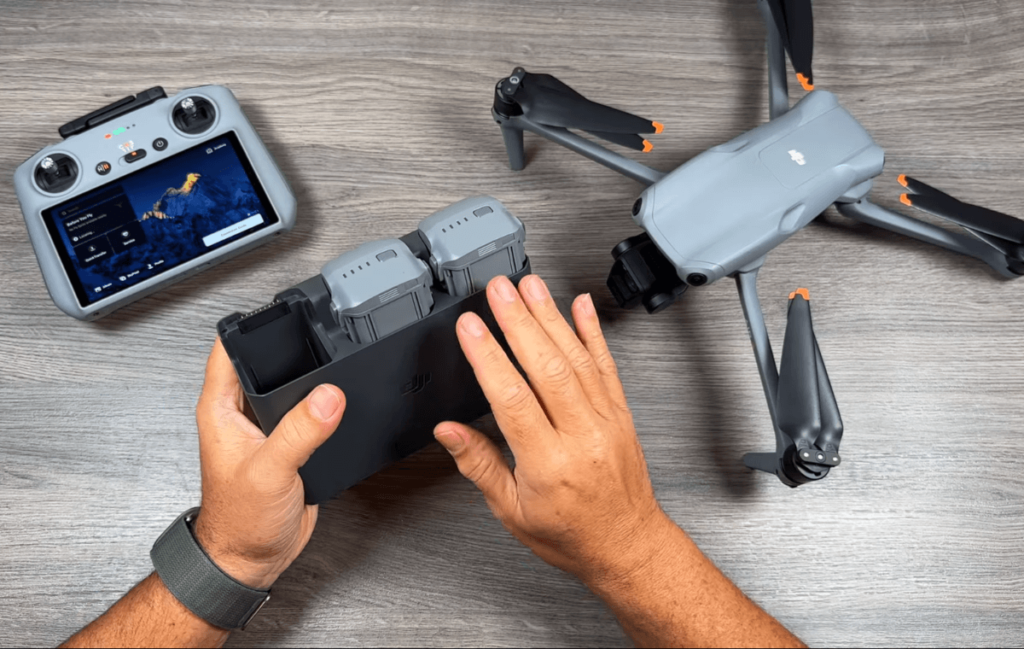Introducing our comprehensive long-term review of the DJI Air 3. When DJI initially unveiled the Air 3, I’ll admit I was somewhat disappointed to learn that it lacked the 1-inch sensor found in its predecessor, the Air 2S. In my opinion, that feature was what made the Air 2S so attractive—a compact drone with a 1-inch sensor. However, after spending time flying it and examining the footage, any reservations I had quickly dissipated. The footage captured by the Air 3 proved to be absolutely stunning. It became clear to me that when it comes to image quality, sensor size is just one piece of the puzzle. DJI has mastered the art of capturing high-quality images and video with the Air 3.
One of the most notable enhancements introduced with the Air 3 is its new dual-camera system. This system offers a wide-angle lens, ideal for everyday scenarios, as well as a three-times tele camera. The tele camera not only allows you to zoom in without sacrificing quality, but it also enables you to achieve a compression effect that draws the background closer—a useful feature for creative shots. Surprisingly, I found myself using the tele camera more than expected. Both cameras feature a 1/1.3-inch sensor and are capable of filming in vlog mode, making them versatile tools for content creation.

For those who create content for social media, the Air 3 offers the option to capture in vertical mode. While the camera does not physically flip like on some other models, you can adjust the aspect ratio in the software to shoot vertically. This mode captures footage at a maximum resolution of 2.7K, perfect for social media platforms. with Air 3 you go into the software, and you can set the aspect ratio to vertical. Although in this mode it will only capture a maximum resolution of 2.k which is more than adequate for social media. Filming this way is actually a little bit safer and can make it a little bit easier to line up shots. Just for the fact that what it does is it darkens the side of the screen so it shows you where you’re going to be capturing but still you can see what’s around you. So you’re not so tunnel visioned. You can still see if there’s any obstacles coming up beside you. Of course, the video that is saved to the memory card is going to be in that vertical format in a resolution of 2.7k as mentioned.

Now of course there were a lot of little refinements to the R3 but there are some really useful features, first of all when it comes to charging everything is now charged by USB type C which is fantastic. DJI adopted the charging hub style from the mini series for the Air 3. The design is just really nice, batteries easily insert and they are held into place. This hub can also be used as a power bank, you can plug your phone into it if you’re getting low in power. But they also introduced a really nice feature, a consolidation feature that, If every battery is at 35% you can install batteries in this charging hub and it will consolidate all the power into one battery. I used that a few times and it worked out quite well. It’s allowed me to get extra flights without changing batteries several times.
The Air 3 boasts a sleek design that I find particularly appealing. When folded, it is incredibly compact, making it easy to transport during travel or hiking trips. The included bag, especially in the Fly More Combo, is well-designed and versatile enough to use as a day bag. For those interested in using goggles, DJI has released a firmware update to make the Air 3 compatible with the DJI FPV Goggles V2 and the DJI Motion Controller.

In terms of performance, the Air 3 impresses with its quiet operation and extended flight time. With a maximum flight time of 46 minutes, you can enjoy lengthy flights depending on flying conditions. The Air 3 retains all the intelligent flight modes expected from DJI drones, including Cruise Control, Night Mode, and the new 360° Tracking feature introduced with a recent firmware update. The drone’s enhanced obstacle avoidance system and increased speed make for a safe and enjoyable flying experience.
Priced between the Mini 4 Pro and the Mavic 3 series, the Air 3 strikes a perfect balance of affordability, performance, and portability. Whether you’re a hobbyist or a professional, the Air 3 offers a compelling package that is sure to meet the needs of many drone enthusiasts.



